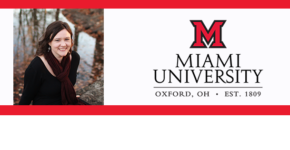 Diversity in an organization doesn’t just mean race or gender.
Diversity in an organization doesn’t just mean race or gender.
Megan Gerhardt, professor of management and leadership at Miami University, examines how a wide variety of ages can also provide benefits.
Megan received her doctorate at the University of Iowa in 2003 in organizational behavior and human resource management. She is currently a Professor of Management at Miami University in Oxford, Ohio, where she also serves as co-director of the Isaac & Oxley Center for Business Leadership in the Farmer School of Business.
Dr. Gerhardt has been conducting research in the field of management and organizational leadership for 15 years, and has been delivering leadership workshops since 2009. She enjoys working with a wide range of professionals across a variety of industries, delivering workshops across the United States, as well as internationally.
Managing Generation Differences in the Workplace
There are now more generations working together in organizations than ever before. Based on the most recent data from the Pew Research Center, the American workforce is composed of 25% Baby Boomers, 33% Generation X, 35% Millennials, and 5% Generation Z. In order for companies to survive and thrive, they will need to intentionally leverage the diversity of thought that all five generations bring to the workplace.
Currently only 8% of organizational diversity strategies include age diversity, making this an overlooked challenge and an untapped opportunity. Research has shown that age diversity can create organizational benefits ranging from increased productivity to improved problem solving. However, these benefits have only been found in organizations that value and foster intergenerational learning and cooperation.
When it comes to generational differences, to achieve such benefits an organization must utilize what I call a “Gentelligent” approach to leadership, creating a climate and design practices to fully develop the potential of age diversity. This can be accomplished through things like mentoring and reverse mentoring, intentionally creating intergenerational collaboration opportunities in work teams, and proactively working to represent a range of generational perspectives on boards of directors. When managed well, the diversity of thought that multiple generations present can significantly enhance outcomes across six areas: cost, resource acquisition, marketing, creativity/innovation, and problem solving.
Best practices in diversity management have yet to be applied in a meaningful or widespread way to generational and age diversity, creating both challenges for managers who need to find ways for employees from these five different generations to work together productively, and opportunities to leverage intergenerational learning to increase success.

Comments
2 responses to “Megan Gerhardt, Miami University – Managing Generation Differences in the Workplace”